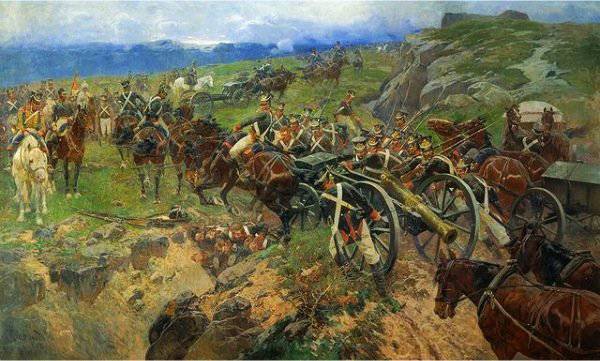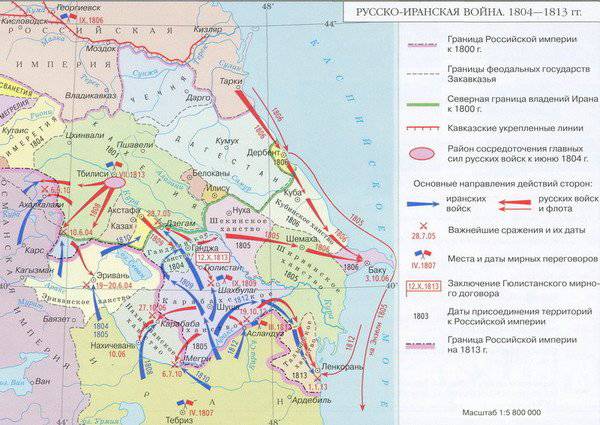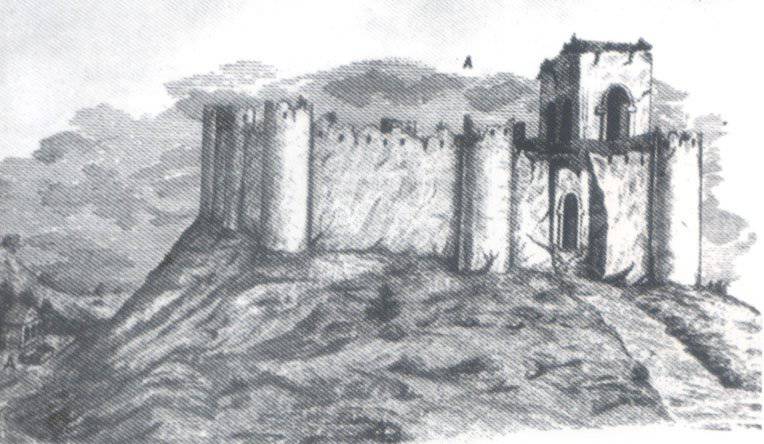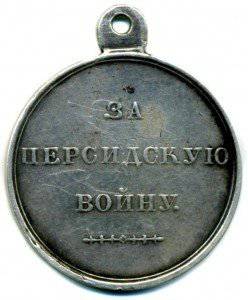300 Spartans Colonel Karyagin

One of the brightest pages in the history of the defense of the southern frontiers of the Fatherland and the development of the Caucasus was entered by the 17 th Chasseur battalion under the command of Colonel Karyagin. The geopolitical situation on the southern frontiers of Russia in the 1805 year was no less difficult than on the western ones. As you know, the Caucasus is an extremely important region from a strategic point of view, this is the “southern underbelly” of Russia, a tasty morsel for those who want to limit its influence in the neighboring Caspian and Black Sea regions, to weaken and deprive it of stability and peace. At the beginning of the 19 century, Persia led by Baba Khan, who did not spare material and military resources, by all means sought to subjugate the lost, or at least significantly weakened, influence in the region, entered into a confrontation with Russia in the Caucasus direction. Of course, Persia’s positions in the Caucasus were shaken precisely because of the arrival of the Russians here. Thus, the Caucasus became the scene of a tough regional military-political confrontation between the two great powers - Russia and Persia. In a word, war was objectively brewing between the two countries.
The reason for the beginning of active hostilities on the part of Persia was the capture by the troops of Prince Tsitsianov of the Ganja fortress. Being in a state of war with Napoleonic France, Russia was not able to increase the number of bayonets of the Caucasian corps. By the end of May 1805, it numbered around 1400 cavalrymen and 6000 infantrymen. At the same time, the troops were dispersed over a huge area and suffered from food shortages and diseases.
The 17 th Jäger Regiment was no exception. The list strength of a regiment of three battalions was 991 soldiers, whereas in fact only about half of the fighters were in the ranks.

After receiving intelligence information about the advancement of numerous Persian troops, the commander of the Russian troops in the Caucasus, Prince Tsitsianov, ordered the commander of the 17 th regiment of colonels, Colonel Karyagin, to stop the advance of the enemy. On June 18, the detachment marched from Elisavetpol to Shusha. In total, the 493 soldier and officer went on the march. The detachment also had two guns.
24 June Persians intercepted a detachment of the river Shah-Bulakh. The Persian army numbered approximately 10 000 people. Karjagin gave the order to build a square and throughout the day successfully reflected the capoque attacks of the Persian cavalry. Taking advantage of the lull, Karyagin’s detachment made a march on 14 miles and camped in the middle of the mountains.
The Persians tried to storm the camp by the evening of the same day. However, all the attempts to defeat the Russian camp were not crowned with success by the Persians, who naively believed that Karyagin’s fighters would surrender without a fight, suffered severe losses. Realizing the futility of their hopes for an easy victory and senselessness of losses, the Persians began shelling the camp, and also cut off the path to the river - the only source of drinking water for the defenders. However, this tactic of the Persians was doomed to a cruel failure. A group of Karyagin fighters broke through to the Persian battery and threw it into the river.
Despite some success, the position of the detachment was not at all enviable. In the camp of the defenders appeared defectors. On the side of the enemy has passed more than twenty traitors. Under these conditions, Karyagin could not help but realize that his tiny detachment could not stand up to the thousands of Persian army endlessly, that sooner or later he would have to take some kind of decision.
The officers' council considered two options: to stay and fight to the last, which would certainly mean the inevitable death of the entire detachment, or break through the Persian encirclement ring and storm the nearby fortress.

Breaking the 10000 rings into Persian thugs is an adventurous idea, to say the least, but in spite of everything the squad command decided to break through. Under cover of darkness and in complete silence, the detachment went on a breakthrough, but stumbled upon a Persian journey. The chase and skirmish began, but the Russians managed to break away from their pursuers, hiding in the famous Caucasian "green", and then go to the fortress of Shah-Bulakh. On the fourth day from the beginning of the adventure, the Karyagin detachment, fairly battered by attacks, pursuits and attacks from a swoop, captured the fortress and managed to organize its defenses until the approach of the main Persian forces that were violently pursuing it. Despite such an obvious success, the position of the defenders continued to remain critical - provisions ended, and in the fortress taken, there were also not enough reserves. From 493, the man in the squadron was left with 175 tired and hungry fighters.
 Aware of the impossibility of holding the fortress, Karyagin appealed to his fighters with a fiery speech and urged them to leave the fortress in order to go to one more redoubt and take it with another bold assault.
Aware of the impossibility of holding the fortress, Karyagin appealed to his fighters with a fiery speech and urged them to leave the fortress in order to go to one more redoubt and take it with another bold assault.Karjagin ordered that guards, who had to overlap with each other all night long, create the illusion of the presence of the whole detachment in the fortress on the walls of Shah-Bulakh. The rest of the detachment emerged from the fortress at nightfall.
Karyagin miraculously slipped out of the fortress unnoticed and the soldiers who remained on the walls as sentries, also had the good fortune to overtake the detachment.
However, the luck of Karyagin and his desperate fighters was still his limit. On the way of the detachment was a deep ditch, through which it was impossible to smuggle the guns that were so necessary for the assault on the next Mukhrata fortress. The problem with the moat was solved thanks to four heroes (one of them was called Gavrila Sidorov, the names of the others remained unknown), who jumped into the moat and literally on their hands and bodies moved the guns to the opposite side. Inhuman load carried only two powerful fighters.
On July 8, the detachment reached Casapet and had the opportunity to rest normally for the first time in many days, after which it set off on a further journey to the Mukhrat fortress.
Mukhrat, too, was taken lightly, literally from a swoop, and the next day, on July 9, Tsitsianov, spoke out to meet the Persians with 2300 bayonets and ten guns. July 15 Persians were defeated, and the remnants of the heroic detachment of Colonel Karyagin connected with the main forces.
Based on materials:
http://hvylya.org/analytics/history/25269-500-russkih-protiv-40-000-persov-neverojatnaja-istorija-ob-otrjade-polkovnika-karjagina.html
http://www.vehi.net/istoriya/potto/kavkaz/211.html
Information